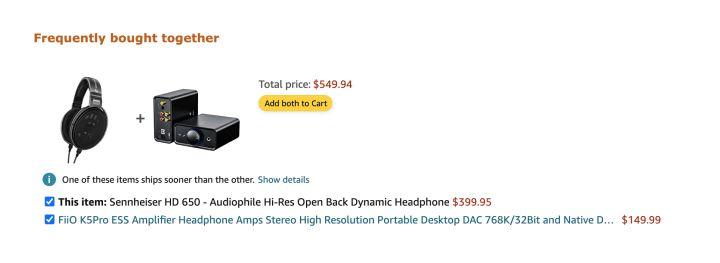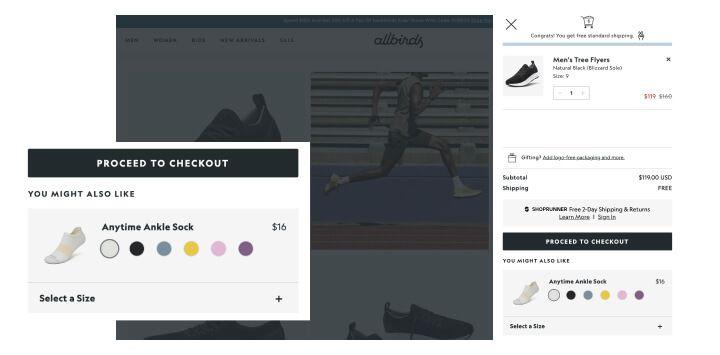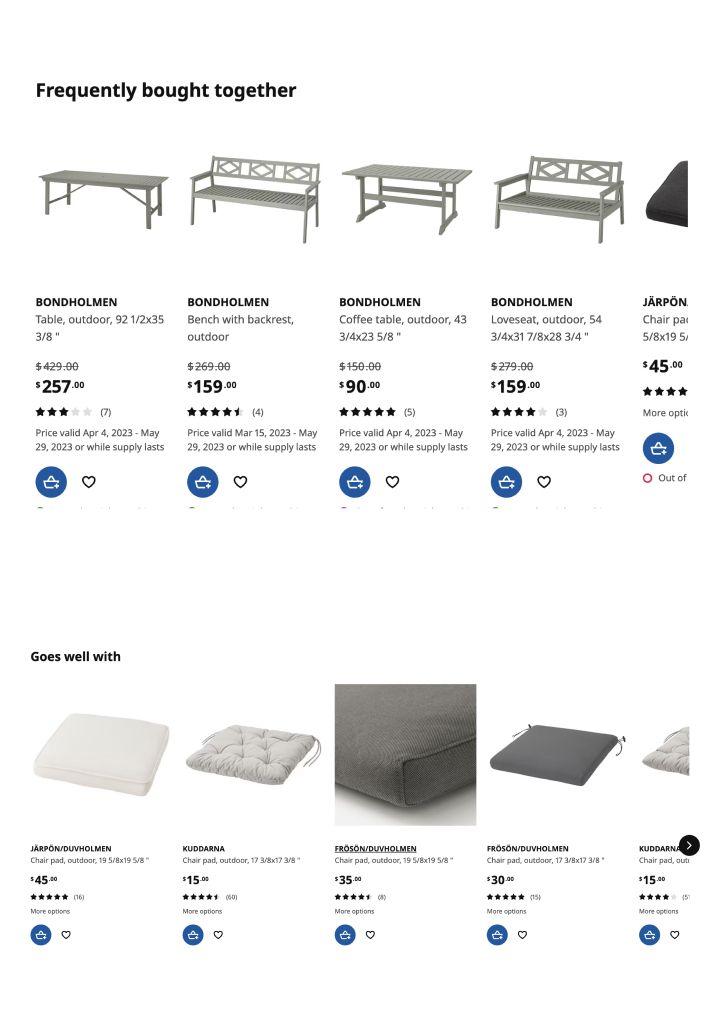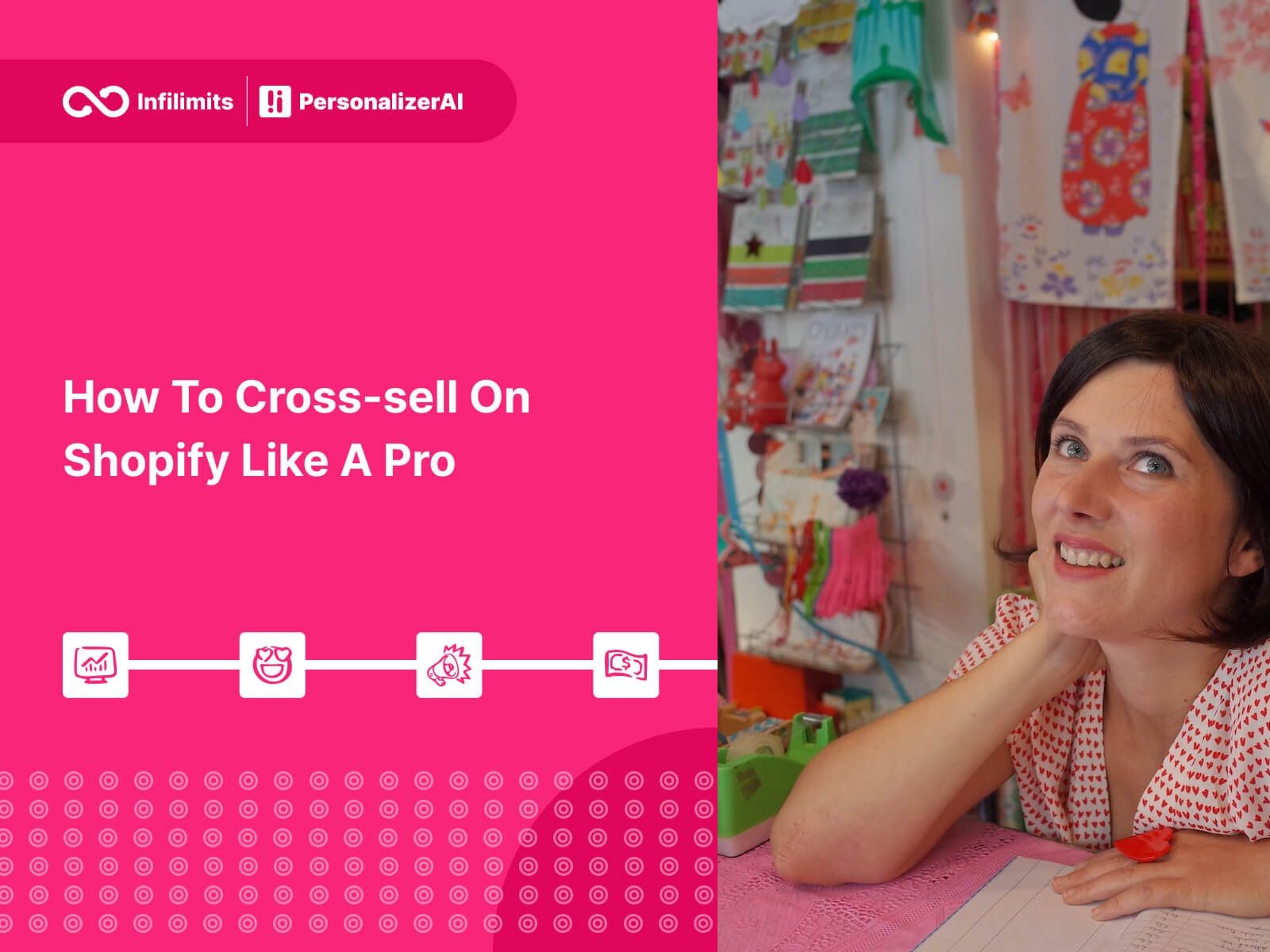Cross-selling is not new sales technique. It has been in use for decades across various industries to generate extra revenue. However, many eCommerce owners still fail to realize the full potential of this sales strategy in terms of generating additional revenue.
To maximize the benefits of cross-selling, it's essential to carefully position the deals throughout your store, utilize smart discount strategies that entice your customers while offering products that are relevant and valuable to them.
Recommending products that meet their needs at right place and at the right time will significantly increase your store's revenue and average order value (AOV).
In this article, you will learn what, where, when and how you can cross-sell on your Shopify store to boost your average order value and sales.
If you are new and want to learn more about cross selling then read: Boost Your Shopify Sales with Cross-Selling: The Ultimate Guide
What kind of products to cross-sell
Brands can sell different types of products during cross-sell. Like complementary, related or accessories and add-ons products.
Cross-selling helps businesses boost their revenue and improve customer satisfaction.
1. Complementary products
Complementary products can also be a great way to boost sales. Customers who buy one product are often more likely to buy related products as well.
Products that are designed to be used together or that complement each other in some way are complementary products .
For example: If a customer buys a camera, complementary products could include a camera bag, a tripod or extra lenses.
Suggesting complementary products to customers can provide a more complete experience and increase the customer's satisfaction.

2. Related products
These are products that are related to the main product in some way. For example: If a customer buys a laptop, related products could include a laptop stand, a mouse or a laptop case.
Related products are a good option for cross-selling as they provide customers with options that are relevant to the product they are considering.
It also helps the customers find everything they need in one place, making the shopping experience more convenient and efficient.
3. Accessories and add-ons
These are extra products that can enhance the functionality or experience of the main product.
For example: If a customer buys a gaming console, accessories and add-ons could include extra controllers, charging docks or gaming headsets.
Providing customers with options that can improve their experience can make the product more useful.
Accessories and add-ons can also be a great way to increase revenue. Customers are always willing to spend more money to get the most out of their original purchase.

4. Replacement products
Replacement items are products that customers may need to replace or replenish over time.
For example: If a customer buys a printer, replacement products could include ink cartridges or printer paper.
Recommending replacement products on right time will also help remind the customer to buy the product again before its finished.
Suggesting replacement products can also be a great way to build customer loyalty. Customers appreciate the convenience of being able to easily buy the products they need to keep their original product functioning properly.
When to cross-sell
While cross-selling can be done at any point during the buying process, timing matters, so it’s important to be strategic about when and where you recommend other products to a customer.
Too frequent or inappropriate cross-selling can lead customers to abandon their carts and even negatively impact your brand's reputation.
Cross-selling can be tried at different stages of the customer journey. Here are some key moments to consider:
1. During the checkout process
Generally its the most common time for cross-selling as the customer is already in a purchasing mindset. Make the most of this opportunity and enhance the customer's experience.
Offer complementary products that will enhance the customer's purchase.
Always emphasize the benefits of the additional products to your customers. For example: "Complete your purchase with these accessories that will make your camera even better."
Don't bombard the customer. Keep the recommendations limited. Too many choices may confuse the customer and lead to indecision.

2. After the purchase
Recommend products post-purchase. Its' a good time to recommend related products that complement the customer's recent purchase.
Implement AI-powered personalized recommendations on your store that are based on the customer's purchase history. For example: If a customer bought a laptop, recommend a laptop bag or a laptop stand post-purchase.
You can also provide a discount on the recommended products as an incentive for the customer to make another purchase.
Your language matters. Always emphasize the added value of the recommended products. For example: "Customers who bought this product also loved these accessories that can make your experience even better."
Ensure all the recommendations are relevant to customers and don't recommend products that are too similar to what the customer has already purchased. AI-powered product recommendations can solve both of these problems for your brand.
3. Take advantage of seasonal offers and holidays
Holidays are the best time to cross-sell. Leverage seasonal offers and promotions to boost AOV and profits during holidays and special occasions.
You can create bundles that include complementary products at a discounted price.
Use language that emphasizes the value of the bundle. For example: "Get everything you need for the perfect holiday season with this exclusive bundle at a discounted price."
Ensure to display social proof such as product reviews and ratings to build trust and encourage customers to make extra purchases.
How to cross-sell on your Shopify store
Cross-selling promotions can be really effective at skyrocketing revenue by boosting AOV and encouraging repeat purchases.
Still it's important to note, that cross-selling promotions should be used thoughtfully and should provide value to the customer.
Bombarding too many irrelevant recommendations in customers' faces may come as forceful and unethical. Frustrating and overwhelming a customer could make you lose them forever.
While there are many different ways you can cross-sell on your online store. Here are some examples of cross-selling promotions for you to use on your Shopify store to encourage customers to buy extra products:
1. Use bundling
Create bundles or packages of complementary products and offer them at a discounted price.
For example: Suggesting a customer who buys a camera, a bundle that includes a camera bag, a tripod and an extra battery at a discounted price.
Use "Frequently bought together" and "Customers also bought" suggestions on the product pages, cart pages or during the checkout process.
A customer who is buying a laptop might see a suggestion for a laptop case or a wireless mouse that is frequently bought together with the laptop.
2. Offer discounts and promotions
Offer discounts and promotions on complementary products to incentivize customers to buy extra items.
For example: Offer a discount on a camera bag when a customer purchases a camera.
Use "Buy one, get one" (BOGO) offers by providing customers an extra product for free or at a discounted price when they buy a specific product.
A customer who buys a pair of shoes could get a second pair at half price.
3. Limited-time offers
Display time sensitive discounts and special deal promotions in shopping carts or during checkout to unlock FOMO ( fear of missing out).
For example: A customer who buys a shirt might be shown a limited-time discount on a pair of pants or a jacket.
4. Personalized recommendations
Use customer data to segment customers and personalize recommendations for each segment.
For example: Customers who have previously purchased running shoes may be more likely to buy running socks, so you can suggest running socks as a complementary product.
Personalize the recommendations on a customer's browsing and purchase history using machine learning algorithms. Personalized suggestions are more likely to convert as they will be relevant to the customer.
For example: A customer who frequently purchases coffee might be offered a discount on a new coffee maker.
Shopify stores are using PersonalizerAI, a powerful Shopify app to cross-sell effectively with personalized product recommendations. You too can start cross-selling like a pro by installing PersonalizerAI on your Shopify store today!

5. Timing is everything
Offer complementary products at the right time during the buying process.
For example: Display complementary products on the product page when the customer is still browsing. Offer upsells during checkout when the customer is already committed to making a purchase.
Display related or complementary products that a customer might find interesting on all product pages.
If a customer is looking at a laptop, you could also suggest a laptop bag or a mouse.
Display a "frequently bought together" section on the product page or during checkout.
Show casing products that are often purchased with the item the customer is considering.
For example: If a customer is looking at a dress, you could suggest shoes and a necklace that would complement the dress.
Send personalized emails with recommendations for all abandoned carts.
For example: If a customer has added products to their cart but hasn't completed the purchase, you should send them email suggesting other products that the customer may be interested in.
Cross-selling is a powerful marketing and sales technique that can benefit most businesses, regardless of their industry or niche. If you want to boost your revenue, incorporating cross-selling into your marketing strategy is a must.
The strategies I've mentioned above can serve as a useful starting point for implementing cross-selling in your own e-commerce store. Give it a try and you'll see the positive impact it can have on your bottom line.
Want to learn the best practices for cross selling: Cross-Selling for Ecommerce: Examples and Best Practices
